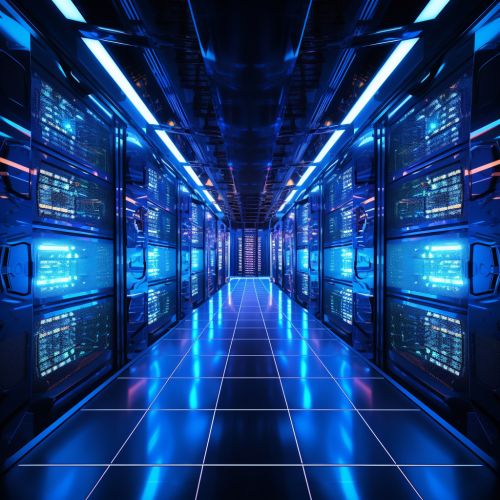Computer security
Introduction
Computer security, also known as cybersecurity, is the protection of computer systems and networks from the theft of or damage to their hardware, software, or electronic data, as well as from the disruption or misdirection of the services they provide. It encompasses the processes and mechanisms by which digital equipment, information, and services are protected from unauthorized access, change, or destruction.


Historical Perspective
The history of computer security dates back to the early days of computing, where the primary concern was physical security of the machines. As technology advanced, the need for safeguarding the confidentiality, integrity, and availability of data became paramount. The evolution of computer security has been shaped by the development of the internet, the proliferation of digital data, and the sophistication of cyber threats.
Theoretical Foundations
Information Security Models
Information security models such as the Bell–LaPadula model, which focuses on data confidentiality, and the Biba Model, which addresses data integrity, provide the theoretical underpinnings for computer security. These models establish frameworks for understanding how access to information should be managed and how security policies can be enforced.
Cryptography
Cryptography is the practice and study of techniques for secure communication in the presence of third parties called adversaries. Modern cryptography intersects the disciplines of mathematics, computer science, and electrical engineering. Applications of cryptography include public key infrastructure and secure sockets layer (SSL) protocols for secure communication.
Security Protocols
Security protocols are essential for ensuring secure communication and data transfer over networks. Protocols such as TLS, Secure Shell (SSH), and Internet Protocol Security (IPsec) are critical for protecting data in transit.
Security Measures
Access Control
Access control mechanisms are critical for ensuring that only authorized users have access to computer resources. These mechanisms include user authentication, role-based access control (RBAC), and mandatory access control (MAC).
Malware Defense
Defending against malware requires a combination of antivirus software, firewalls, and intrusion detection/prevention systems (IDS/IPS). These tools help detect, prevent, and remove malicious software that can compromise computer systems.
Secure Coding Practices
Secure coding practices are vital for preventing vulnerabilities in software. Techniques such as input validation, code review, and the use of security-focused development frameworks help mitigate the risk of exploitation.
Risk Management
Threat Assessment
Threat assessment involves identifying, quantifying, and prioritizing potential threats to computer security. This includes analyzing threat sources, such as cybercriminals, nation-states, and insiders, as well as the methods they employ.
Vulnerability Management
Vulnerability management is the process of identifying, classifying, remediating, and mitigating vulnerabilities in software and hardware. Tools such as vulnerability scanners and patch management systems are integral to this process.
Incident Response
Incident response is the organized approach to addressing and managing the aftermath of a security breach or cyberattack. This process involves preparation, detection and analysis, containment, eradication, recovery, and post-incident activities.
Legal and Regulatory Framework
Data Protection Laws
Data protection laws, such as the GDPR in the European Union and the California Consumer Privacy Act (CCPA) in the United States, set standards for the secure collection, storage, and dissemination of personal information.
Cybersecurity Standards
Cybersecurity standards, including ISO/IEC 27001 and the National Institute of Standards and Technology (NIST) frameworks, provide guidelines and best practices for managing information security.
Compliance and Auditing
Compliance with legal, regulatory, and contractual obligations is a critical aspect of computer security. Auditing processes ensure that organizations adhere to these requirements and maintain the confidentiality, integrity, and availability of data.
Emerging Technologies and Challenges
Artificial Intelligence and Machine Learning
The use of artificial intelligence (AI) and machine learning in computer security can enhance threat detection and response. However, these technologies also introduce new vulnerabilities and can be used by adversaries to develop sophisticated attacks.
Internet of Things (IoT)
The proliferation of IoT devices expands the attack surface for cyber threats. Securing these devices requires specialized approaches due to their diverse nature and resource constraints.
Quantum Computing
Quantum computing poses a significant threat to current cryptographic standards. Research into quantum-resistant algorithms is crucial for maintaining the security of encrypted data in a post-quantum world.
Future Directions
The future of computer security is likely to be shaped by advances in technology, evolving threat landscapes, and changes in regulatory environments. The development of new security paradigms, such as zero trust architecture, and the continuous improvement of existing technologies will play a key role in safeguarding digital assets.
See Also
Information Assurance Cyber-Physical System Security Social Engineering (security)
